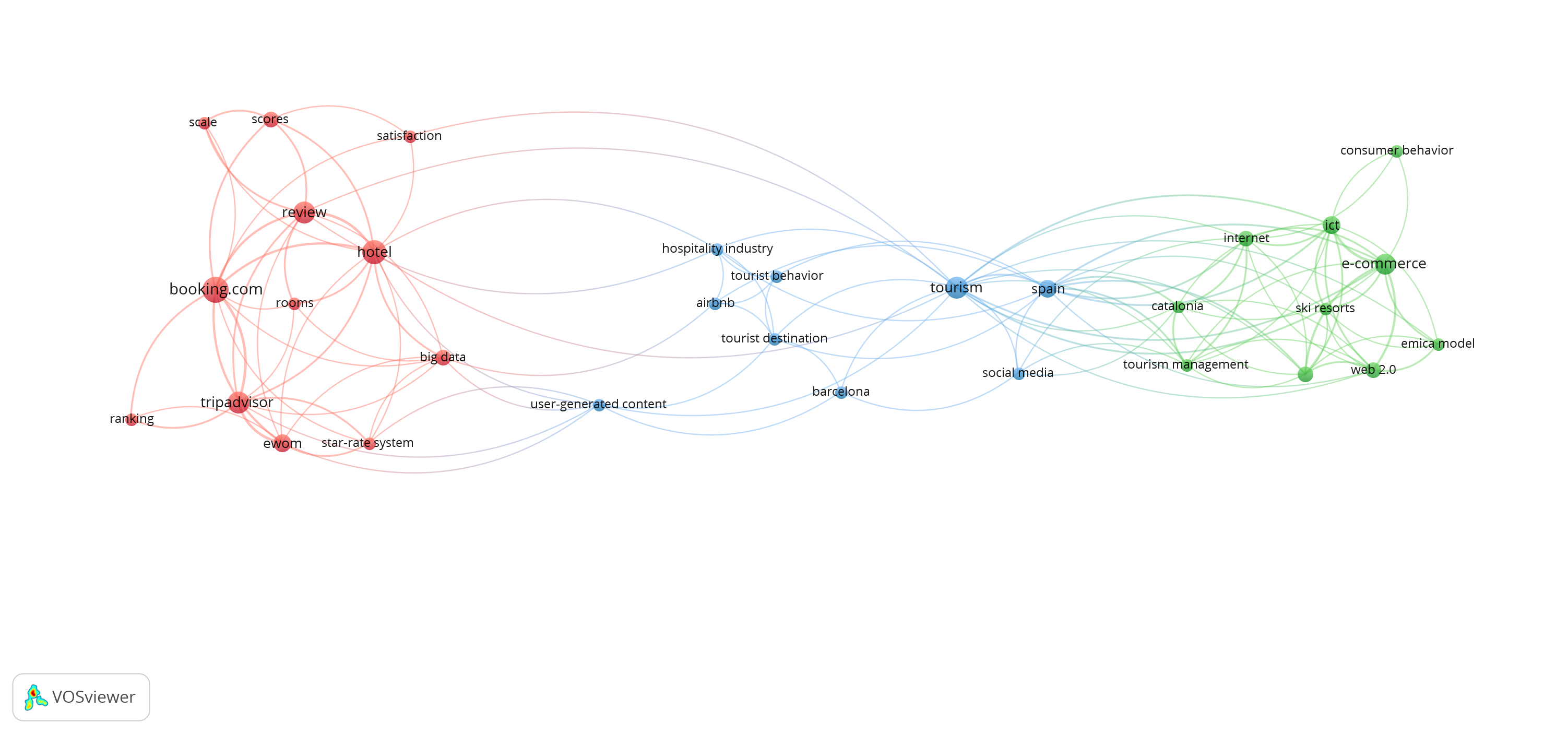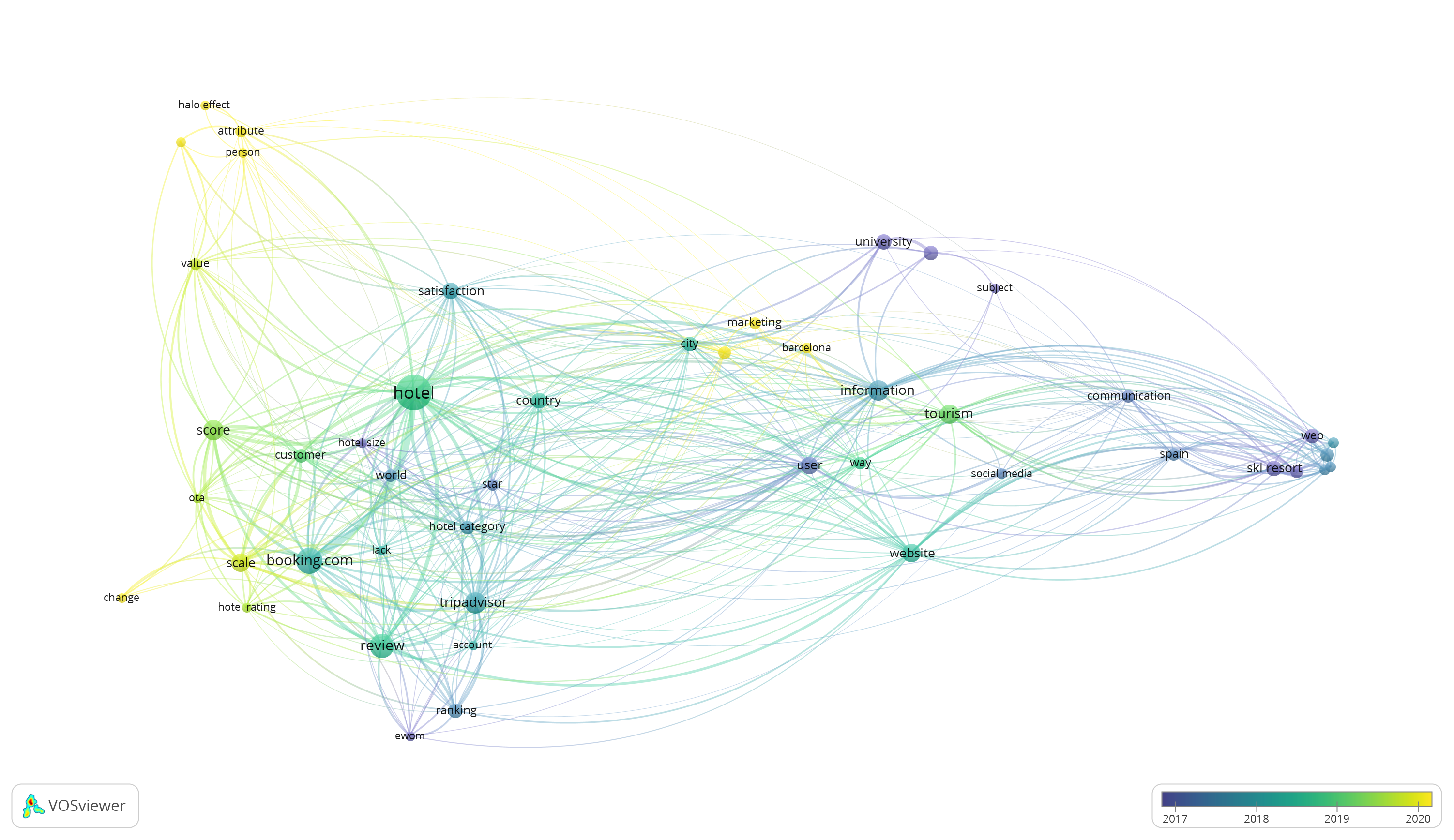67 USER-GENERATED CONTENT IN TOURISM – Contributions by Eva Martin-Fuentes
Introduction
My initiation to the world of research and teaching in tourism and the hospitality industry came rather late since before devoting myself to it, for almost 20 years, my career focused on the management of cultural activities and congress and conference organization. That is in addition to overseeing tourism promotion for the Lleida Provincial Council Tourist Board in Catalonia, Spain.
When I worked in the Tourist Board of my home region, the opportunity arose to dedicate myself to university teaching at the University of Lleida since the bachelor’s degree in Tourism was just starting, and I began to work as a part-time lecturer to provide a practical standpoint of event management and promoting tourism.
I slowly began to develop a passion for research in tourism (I had already been passionate about tourism for many years) and the hospitality industry, and I embarked on research using user-generated content (UGC) in tourism and in the hospitality industry.
This chapter presents the various contributions made over the last five years in research in tourism, especially in the analysis of UGC.
Literature Review
During my early years, in collaboration with researchers from my department at the University of Lleida, our research focused on issues close to our region and even our institution. We performed research into the implementation of e-commerce in ski resorts in Spain and Andorra (Cristobal-Fransi, Daries-Ramon, Mariné-Roig, & Martin-Fuentes, 2017).
I then began to work in conjunction with lecturers of the Department of Computer Engineering at my University on issues related to the hospitality industry based on user-generated content on such platforms as TripAdvisor or booking platforms that allow feedback from users, such as Booking.com.
We verified whether ratings given by guests in hotels all over the world match hotel categories, confirming that there is a relationship between guests’ opinions and the hotel classification system (Martin-Fuentes, 2016), and that possible false opinions due to the anonymity of opinions on platforms such as TripAdvisor do not alter the position in the rankings of hotels worldwide compared with the opinions on platforms where the user is authenticated, such as Booking.com, with data from hotels of more than 400 tourist destinations around the world (Martin-Fuentes, Mateu, & Fernandez, 2018).
We confirmed that hotel categories worldwide can be inferred from the features appraised by users, and we created a model with machine learning techniques to classify any type of accommodation, for example, properties offered by Airbnb. This work has so far been the most cited (Martin-Fuentes, Fernandez, Mateu, & Marine-Roig, 2018).
We have also worked with researchers from other Spanish Universities in studies that analyse which hotels are most dependent on the Online Travel Agency (OTA), Booking.com, from the number of reviews posted by customers (Martin-Fuentes & Mellinas, 2018), with samples from 34,000 hotels and millions of reviews, whether the size of hotels influences their ability to get more reviews on TripAdvisor, concluding that smaller hotels are able to achieve a higher percentage of opinions from their guests than larger ones (Mellinas & Martin-Fuentes, 2019), or whether the means of collecting reviews and ratings on different OTAs affects the ratings obtained by hotels (Martin-Fuentes, Mellinas, & Parra-Lopez, 2021). We have also measured the effects of the new Booking.com measuring scale concluding that the worst-rated hotels will see their scores fall in the coming years (Mellinas & Martin-Fuentes, 2021).
In recent years we have collaborated with professors from universities in other countries analysing whether monetary and non-monetary components in user ratings when scoring a hotel establishment influence their satisfaction (Nicolau, Mellinas, & Martín-Fuentes, 2020a) and other study in which we have confirmed that there is a halo effect in users’ ratings of hotels (Nicolau, Mellinas, & Martín-Fuentes, 2020b).
We have also investigated the destination image from the reviews posted by people staying at peer-to-peer establishments so that destinations can design tourism experiences in accordance with their opinions (Lalicic, Marine-Roig, Ferrer-Rosell, & Martin-Fuentes, 2021) and we have studied patterns of posts by hotels on their social networks (Ferrer-Rosell, Martin-Fuentes, & Marine-Roig, 2020).
Methodology
Throughout these years we have worked with different data sources. In the early years, data was collected manually but gradually, data collection has become automated, and we have used webscraping tools to collect millions of reviews from opinion platforms or we have used massive data downloaded from the Internet provided by third parties such as InsideAirbnb.com.
The methodology used at each moment has also been different, ranging from Extended Model of Internet Commerce Adoption (eMICA) and Web Content Analysis models through quantitative techniques such as comparative one-way ANOVA or the t-test, to using supervised machine learning techniques like Support Vector Machine or content analysis combined with Compositional data (CoDa).
Results
The results show, from the automatic analysis with VosViewer software (van Eck & Waltman, 2010) of the keywords of all studies conducted together with different researchers that there are three research clusters, as can be seen in Figure 1.
Green shows articles at the start of my career on e-commerce, web analysis of ski resorts in Catalonia, Spain and Andorra. A second cluster in blue deals with user-generated content used for the analysis of tourist destinations and for the hospitality industry, and a third cluster in red on the measuring scales of hotel ratings on different opinion platforms that are used to measure user satisfaction and compare it with hotel classification systems, among others.

Also, Figure 2, based on the repetition of words in titles and abstracts of studies published to date, shows their evolution. Lilac indicates early studies on e-commerce and electronic word-of-mouth (eWOM), green represents studies on reviews and hotel ratings, while yellow depicts recent studies on the halo effect or the analysis of monetary and non-monetary attributes of user ratings.

Conclusions
Overall, my contribution to tourism research through the analysis of user-generated content can be summarized in 60 papers including journal articles, book chapters and presentations at conferences given with a dozen researchers from around the world. I have also participated in various research and transfer projects and in research seminars on techniques of massive data downloading and on machine learning, among others.
In addition to research, my most special contribution and the one I am perhaps most proud of, is the teaching I have done over the years on the bachelor’s degrees in Business Administration and Management and in Tourism, and on the master’s degrees in Marketing and in Electronic Tourism.
As future lines we are starting to work on tourism induced by audiovisual fiction (Martin-Fuentes, Nieto Ferrando, Marine-Roig, & Ferrer-Rosell, 2020) with the use of UGC for this new research line.
Written by Eva Martin-Fuentes, University of Lleida, Catalonia, Spain
Read Eva’s letter to future generations of tourism researchers
References
Cristobal-Fransi, E., Daries-Ramon, N., Mariné-Roig, E., & Martin-Fuentes, E. (2017). Implementation of Web 2.0 in the snow tourism industry: Analysis of the online presence and e-commerce of ski resorts. Spanish Journal of Marketing – ESIC, 21(2), 117–130. https://doi.org/10.1016/j.sjme.2017.06.002
Ferrer-Rosell, B., Martin-Fuentes, E., & Marine-Roig, E. (2020). Diverse and emotional: Facebook content strategies by Spanish hotels. Information Technology & Tourism. https://doi.org/10.1007/s40558-019-00164-z
Lalicic, L., Marine-Roig, E., Ferrer-Rosell, B., & Martin-Fuentes, E. (2021). Destination image analytics for tourism design: An approach through Airbnb reviews. Annals of Tourism Research, 86, 103100. https://doi.org/10.1016/j.annals.2020.103100
Martin-Fuentes, E. (2016). Are guests of the same opinion as the hotel star-rate classification system? Journal of Hospitality and Tourism Management, 29, 126–134. https://doi.org/10.1016/j.jhtm.2016.06.006
Martin-Fuentes, E., Fernandez, C., Mateu, C., & Marine-Roig, E. (2018). Modelling a grading scheme for peer-to-peer accommodation: Stars for Airbnb. International Journal of Hospitality Management, 69, 75–83. https://doi.org/10.1016/j.ijhm.2017.10.016
Martin-Fuentes, E., Mateu, C., & Fernandez, C. (2018). Does Verifying Users Influence Rankings? Analyzing Booking.Com and Tripadvisor. Tourism Analysis, 23(1), 1–15. https://doi.org/10.3727/108354218X15143857349459
Martin-Fuentes, E., & Mellinas, J. P. (2018). Hotels that most rely on Booking.com – online travel agencies (OTAs) and hotel distribution channels. Tourism Review, 73(4), 465–479. https://doi.org/10.1108/TR-12-2017-0201
Martin-Fuentes, E., Mellinas, J. P., & Parra-Lopez, E. (2021). Online travel review rating scales and effects on hotel scoring and competitiveness. Tourism Review, 76(3), 654–668. https://doi.org/10.1108/TR-01-2019-0024
Martin-Fuentes, E., Nieto Ferrando, J., Marine-Roig, E., & Ferrer-Rosell, B. (2020). From Blockbuster to Neighbourhood Buster: The Effect of Films on Barcelona. Sustainability, 12(6), 2290. https://doi.org/10.3390/su12062290
Mellinas, J. P., & Martin-Fuentes, E. (2019). Does hotel size matter to get more reviews per room? Information Technology & Tourism, 21(2), 165–180. https://doi.org/10.1007/s40558-018-0126-7
Mellinas, J. P., & Martin-Fuentes, E. (2021). Effects of Booking.com’s new scoring system. Tourism Management, 85, 104280. https://doi.org/10.1016/j.tourman.2020.104280
Nicolau, J. L., Mellinas, J. P., & Martín-Fuentes, E. (2020a). Satisfaction measures with monetary and non-monetary components: Hotel’s overall scores. International Journal of Hospitality Management, 87, 102497. https://doi.org/10.1016/j.ijhm.2020.102497
Nicolau, J. L., Mellinas, J. P., & Martín-Fuentes, E. (2020b). The halo effect: A longitudinal approach. Annals of Tourism Research, 83, 102938.
van Eck, N. J., & Waltman, L. (2010). Software survey: VOSviewer, a computer program for bibliometric mapping. Scientometrics, 84(2), 523–538. https://doi.org/10.1007/s11192-009-0146-3

